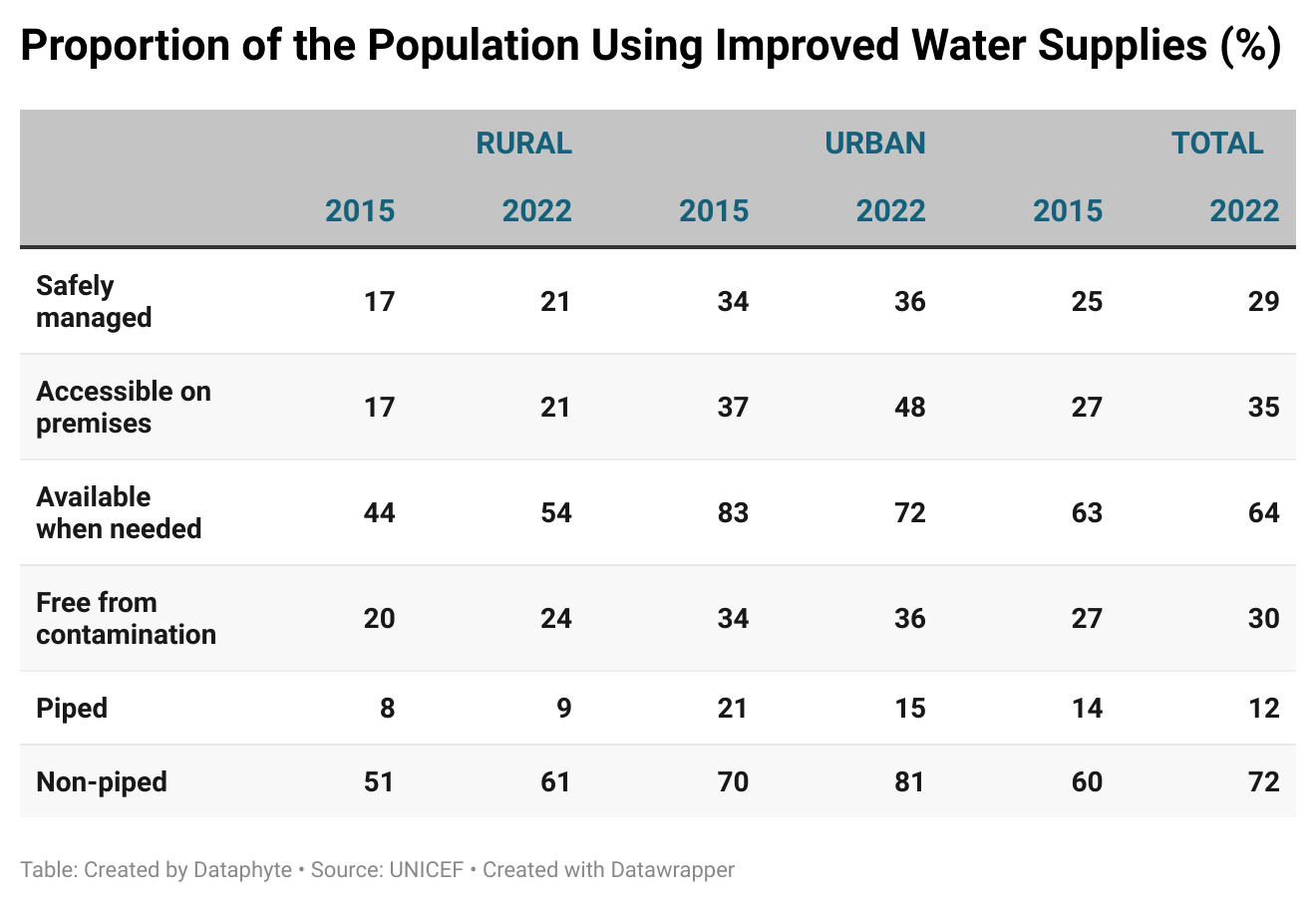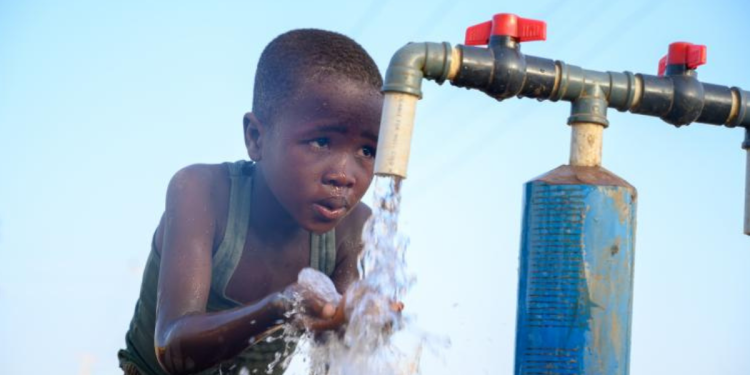Access to portable drinking water is still a surmountable challenge for Nigerians. The latest data from UNICEF showed improved access to water at the basic level though it is largely considered unsuitable for drinking due to contamination.
Only 30 per cent have access to water free of contaminants.
This places the country at a disadvantage in achieving the 2030 Agenda for Sustainable Development Goal (SDG) 6. This target stipulates universal access to clean water, sanitation, and hygiene (WASH) and intends to ensure the availability and sustainable management of water and sanitation for all.
Nigeria made progress in access to water at the basic level. As of 2015, 68 per cent of the population had access to water. This increased to 80 per cent in 2022.
.png)
This progress was recorded in both the rural and urban areas. As of 2022, 63 per cent of rural dwellers had access to water, an improvement from 53 per cent in 2015. In urban areas, 94 per cent of people now have access to water, an increase from 85 per cent in 2015.
The report revealed an improvement in the time spent to access water. The proportion of those that experience some limitation to access this water at a basic level dropped in 2022 over 2015. In 2015, 7 per cent had to spend more than 30 minutes to access this water. This number however dropped to 4 per cent in 2022.
Also, the use of unimproved and surface water dropped over the period. Unimproved water source usage dropped from 15 per cent in 2015 to 11 per cent in 2022. Use of surface water dropped from 10 per cent to 5 per cent over the period.
However, the data revealed that most of the water accessed at the basic level is unsafe for drinking.
Only 29 per cent of the water accessed is safely managed in 2022. This shows that 71 per cent of the water accessed at the basic level is unsafe for drinking. By implication, only 3 of 10 Nigerians can access safely managed water daily. This showed an improvement from 25 per cent in 2015.
Most people who access the water must get it outside their residential premises. The data revealed that only 35 per cent have this water readily available within their premises in 2022. This was an improvement from 27 per cent in 2015.
At least 6 out of 10 people always have access to water when needed in 2022. Data showed that 64 per cent always get water readily available for use, a marginal improvement of the 63 per cent in 2015.

Most of the water the people use is contaminated, making it unsafe for direct usage without secondary purification. Though there was an improvement in the proportion of those whose water is free of contamination, the proportion is still low.
As shown, 30 per cent used water free of contamination in 2022 compared to 27 per cent in 2015. But it also means that 70 per cent consumed contaminated water in the country daily.
The source of this water is mostly non-piped water. The situation is that only 12 per cent used piped water in 2022 compared to the 72 per cent that used non-piped water.
There was a decline in the use of piped water from 14 per cent in 2015 to 12 per cent in 2022, while those that used non-piped water increased from 60 per cent to 72 per cent within the period.
This access to water has implications for the population. As stated by UNICEF, 73 per cent of enteric diseases are caused by poor or contaminated water consumption. This leads to increased cases of diarrhoeal and other water-borne diseases.
Also, as stated by United Nations, poor water, sanitation, and hygiene cause 1.4 million deaths annually and shorten the lives of 74 million people.
Thus, while this impedes the country’s progress in attaining SDG 6, it places a substantial health risk on the population, increasing the chances of death by water-borne disease.



.png)
